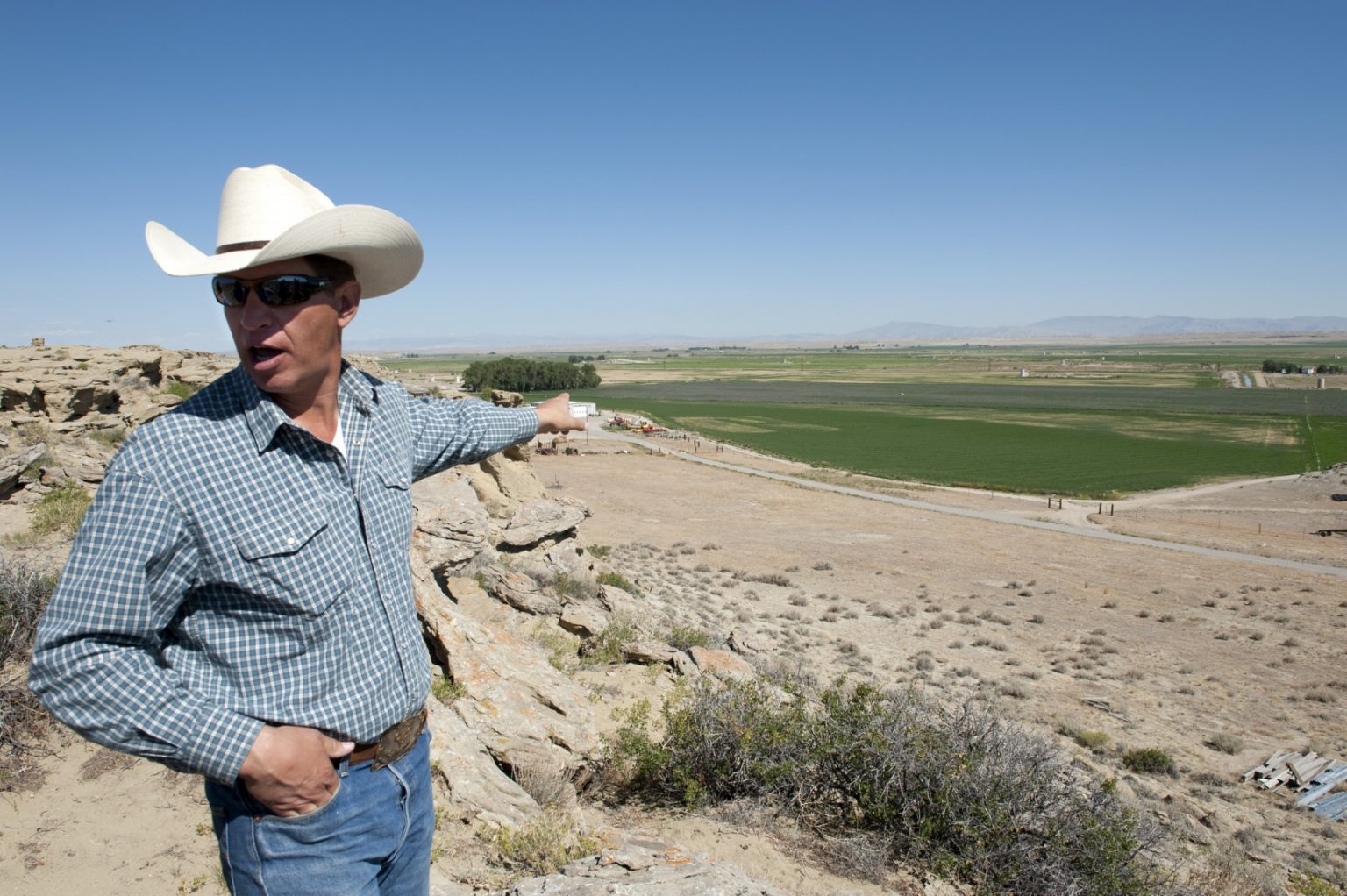Chemicals from gas wells were discovered in biological samples drawn from residents of Pavillion, Wyoming, at levels as much as ten times the national averages, according to a new report. The study is the first to sample both the air near drilling sites and the levels of chemicals in people living and working near those wells, allowing researchers to study the ways that toxic air pollutants are entering people’s bodies near gas wells and putting their health at risk.
The researchers found evidence of 16 potentially dangerous chemicals in 11 individuals who volunteered to participate in the study by wearing air monitors and providing blood and urine samples. They found benzene, toluene, 2-heptanone, 4 heptanone and evidence of roughly a dozen other substances — including some known to be quite dangerous and others for which little safety information is available.
Wilma Subra, a chemist and microbiologist who has spent three decades researching the impacts of toxic chemicals, and who participated in the new report, told DeSmog that there was reason to be concerned about the health of the people included in the study, saying that they found chemicals “above acceptable levels in many cases.”
The health concerns would be about the same in many gas fields across the U.S., she said. “It is very similar to other areas where shale has been developed,” she added, “but also to areas where conventional drilling has taken place over the years.”
Pavillion is perhaps best-known nationwide for its battles over water contamination and fracking, which began in roughly 2008 when locals first reported that their water tasted different and carried strange odors. The Environmental Protection Agency launched a study, then dropped it, leaving the investigation to state regulators who have yet to reach any final conclusions.
In March, scientists from Stanford University published a paper concluding that drinking water supplies showed clear evidence of contamination from fracking operations.
Encana, a drilling company operating in Pavillion has continued to deny that it polluted locals’ drinking water. But while the scientific debate over the water in Pavillion raged, the air emissions from the gas field have remained relatively less studied, despite complaints from locals about headaches, nosebleeds and odd smells.
“Our family has experienced phantom odors, rashes, hair loss, respiratory conditions, neurological problems, epileptic seizures, cancer, and huge hits to how we think and reason,” said John Fenton, a Pavillion rancher. “These symptoms match up with the known effects of the toxic chemicals emitted in our air from gas production operations.”
“This biomonitoring project was an opportunity to find out if the chemicals we know are in the air, are also in our bodies,” Fenton said.
The Pavillion area has experienced heavy drilling over the past several decades. “My wife’s family has been here for over 40 years. When I first came to the farm there were two gas wells on it,” Fenton, who was profiled in Gasland, told the researchers. “Over the next 15 years, 22 more were drilled.”
In recent years, oil and gas drilling near people’s homes has become increasingly common. On Wednesday, a map showing that roughly 12.4 million people live within a half-mile of at least one active oil or gas well was published by Earthworks and the Clean Air Task force.
“Some of the wells are 50 to 100 feet from the homes,” Subra, a MacArthur Fellowship “Genius” Award recipient, said about Pavillion, “which is similar to the Marcellus and Haynesville.” The Marcellus shale is in Pennsylvania and the Haynesville stretches across parts of Texas, Louisiana and Arkansas.
And years of living near the wells can cause long-term chemical exposures and health issues.
The new report, which was conducted by a group of environmental non-profits and scientists led by the Vermont-based collaborative Coming Clean, described one gas-related substance, “trans,transmuconic acid,” that was found in urine samples from Pavillion residents in higher concentrations than the median levels for refinery workers in Brazil. But relatively little is known about the health impacts of the vast majority of chemicals associated with drilling and fracking.
This lack of data is no reason for inaction, the report entitled When the Wind Blows: Tracking Toxic Chemicals in Gas Fields and Impacted Communities argues, because the dangers from the most-studied chemicals discovered in the study, a group of volatile organic compounds known as the BTEX chemicals (benzene, tolulene, ethyl-benzene and xylenes) are sufficiently clear.
“Highly toxic chemicals present in the Pavillion area indicate that current environmental regulations are not adequately protecting community members from harm,” the researchers wrote. “While additional research can be helpful, regulatory agencies already have enough emissions data available to justify swift action to protect public health and the environment.”
In fact, the risks may only grow over time, they wrote, because of the area’s long history of drilling and a lack of federal controls over abandoned oil and gas wells. “The Pavillion/Muddy Ridge gas field consists of ageing and inadequately constructed wells, deteriorating infrastructure and known contamination,” they wrote, “that poses an even greater hazard as the field ages.”
Photo Credit: Jeremy Buckingham/Creative Commons
Subscribe to our newsletter
Stay up to date with DeSmog news and alerts






